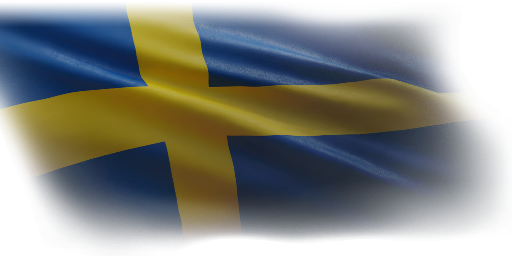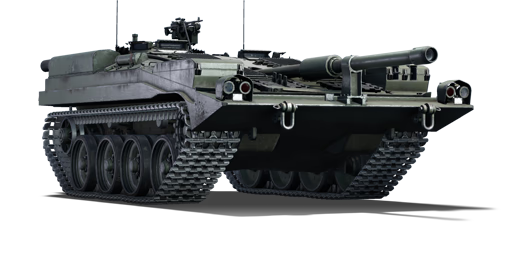



The Strv 103A was the first production variant of the Strv 103 family. It was delivered after the trials of the "zero series" provided satisfactory results. An order of 70 units was placed by the Army with a cost of 500 million kr (SEK). The first batch was delivered in 1964, and was quite liked by their crews. However, the vehicle also had some shortcomings, most notably in the form of its 300 hp engine, which was considered somewhat underpowered. This was remedied in the Strv 103B in 1970, with the gas turbine engine having its engine power increased to 490 hp.
The Strv 103A was introduced in Update 1.97 "Viking Fury". A unique vehicle in shape, it is a very unorthodox vehicle in design even beyond its turretless design. With a 4 second autoloader, almost invisible profile when hunkered behind a hill, and laser rangefinder, alongside its highly sloped frontal armour, the Strv 103 is a juggernaut at long range. Only the Ikv 91, OF-40, VIDAR, and a select few others can compete in the same league as the Strv 103 with their laser rangefinders, but with the 103's superior and extremely consistent reload rate it is second to none at holding down long sightlines. However, the Strv 103 is somewhat clunky to use in close quarters, due to its reliance on hull aiming, and unless the enemy bounces their shot or fails to do any meaningful damage you can easily be caught out and rushed down. The front armour of the Strv 103 is something to keep note of - it can deflect many APDS and even HEATFS rounds to the upper plate due to its extreme angle, although some rounds can still make their way through - but the side armour is not, so making sure nobody flanks you is a top priority. Alongside this, the Strv 103 is prone to taking engine or transmission damage when being fired upon - another reason to stay at range, lest your enemy simply move sideways and shoot your weak sides as you sit there immobilized without a turret.
Long story short, the Strv 103 is a very specific kind of vehicle. Unlike the Ikv 91 which is essentially made of paper and fires slower, higher arcing shells, the Strv 103 can be the closest thing to a heavy tank at this BR if positioned and played correctly. However, improper positioning or being caught out in a crossfire can also very easily lead to a painful death as your crew and FPE charges slowly get whittled down. Utilizing your very low profile, long range dominance as well as the ability to survive on 1 crew member will be the key for victory in the Strv 103.
| Ammunition | Type | Armor penetration (mm) at a distance: | |||||
|---|---|---|---|---|---|---|---|
| 10 m | 100 m | 500 m | 1000 m | 1500 m | 2000 m | ||
| APDS | 358 | 355 | 341 | 324 | 308 | 293 | |
| HESH | 127 | 127 | 127 | 127 | 127 | 127 | |
| APDS | 272 | 269 | 258 | 246 | 233 | 222 | |
| HE | 23 | 23 | 23 | 23 | 23 | 23 | |
| Smoke | 3 | 3 | 3 | 3 | 3 | 3 | |
| Belt | Belt filling | Armor penetration (mm) at a distance: | |||||
|---|---|---|---|---|---|---|---|
| 10 m | 100 m | 500 m | 1000 m | 1500 m | 2000 m | ||
| AP/T | 13 | 12 | 7 | 3 | 2 | 0 | |
| Belt | Belt filling | Armor penetration (mm) at a distance: | |||||
|---|---|---|---|---|---|---|---|
| 10 m | 100 m | 500 m | 1000 m | 1500 m | 2000 m | ||
| AP/T | 13 | 12 | 7 | 3 | 2 | 0 | |












Mobility | |
|---|---|
Protection |
|---|
Firepower | ||
|---|---|---|